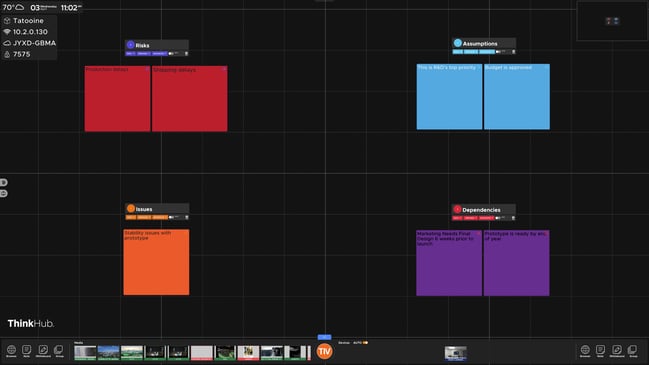A RAID Log is a useful tool for project management, helping teams track Risks, Assumptions, Issues, and Dependencies throughout a project. Here's how you can create a RAID Log using ThinkHub:
1. Create a New Canvas
Start by downloading the RAID log template or creating a new canvas in ThinkHub dedicated to your RAID Log. Name the canvas appropriately, such as "Project RAID Log."
2. Divide the Canvas into Four Sections
Divide the canvas into four sections, one for each element of the RAID Log: Risks, Assumptions, Issues, and Dependencies. You can use ThinkHub's grouping feature to create separate groups for each section.
3. Add Notes to Each Section
Within each group, add notes to capture relevant information. For example:
- Risks: Identify potential risks to the project and their potential impact. Assign owners and mitigation plans if applicable.
- Assumptions: List any assumptions that have been made during project planning. These may include resource availability, stakeholder support, or external dependencies.
- Issues: Document any issues that arise during the project and track their resolution progress. Assign owners and target resolution dates.
- Dependencies: List any dependencies that the project relies on, such as other projects, teams, or external factors. Monitor these dependencies to ensure they are on track.
4. Collaborate and Update in Real-Time
ThinkHub allows team members to collaborate and update the RAID Log in real-time. Team members can add new items, update existing ones, and track progress collectively.
5. Review and Update Regularly
Regularly review and update the RAID Log to ensure that it remains current and reflects the latest project status. Use ThinkHub's commenting feature to discuss items and make decisions collaboratively.

